Waterfalls, Cheese and TV Shows - How Do Foreigners Recognise Croatia?
September the 12th, 2022 - Just what is it that makes Croatia so recognisable to foreign visitors? From Game of Thrones to waterfalls and Christmas events, the list is varied.
As Morski writes, the well known travel blog Travel Drafts Croatia has stated that ''Croatia is a beautiful country in the Western Balkans, which is actually a part of the former Yugoslavia... Although it is a very popular destination among newlyweds, families with children and backpack tourists, this country has recently experienced a small renaissance".
Game of Thrones
One of the most watched series ever to be produced used the Croatian city of Dubrovnik as King's Landing, the fictional capital of the seven kingdoms in the series. Because of this, among other things, word spread about how beautiful this city is. Tourists flock there to see where Cersei had her Walk of Shame, and to tour the sets of the hit series.
The blog then goes on to state that would-be visitord should know that the city is full of tourists during the hot summer months and is much easier to explore during the off-season.
Beautiful waterfalls
Krka National Park is home to the most famous waterfall in all of Croatia, known as Skradinski buk. Plitvice Lakes are also home to numerous beautiful waterfalls. Although they are not so well known individually, this is one of the ten world heritage sites located in Croatia which is under UNESCO protection and one of two natural sites under UNESCO protection.
Red tourism (so-called)
Red tourism is travel to communist, socialist or ex-communist/socialist countries, usually by people originating from non-communist/socialist countries to learn about the heritage of those forms of government. Tours of communist monuments are a great way to learn about what life was like in Yugoslavia. The blog recommends people to start with the Podgaric monument, which is one of the most striking examples of all of this form of ex-Yugoslav public art.
Even traditionally beautiful places like Dubrovnik offer opportunities for people seeking red tourism. Here, you can tour the Red History Museum, which is the first interactive museum in all of the Republic of Croatia dedicated to educating visitors about what life was like during communism.
The World Cup and football
Croatia made it all the way to the finals of the 2018 World Cup. Although they ended up losing to France, they were the pride of Europe and showed the world exactly how outstanding and passionate Croatia is when it comes to the most popular sport in the world. The blog notes that the footballing tradition in Croatia is strong, explaining how the country has actually competed in the World Cup five times as an independent nation. Croatia had its very first performance back in 1998, when it came third! Of course, before that, the Croats competed in the larger Yugoslav team.
Beautiful islands
The Greek islands may be more famous, but the Croatian Adriatic islands are just as (if not more) beautiful. From Pag to Hvar, each one is a small perfect gem located in the middle of the Adriatic Sea. One of the most popular ways to experience the Croatian islands is to go on a sailing adventure and visit the most beautiful islands in the country/ Different islands have different reputations. There are islands known for their nightlife and parties, while others are known as real family-oriented places. Others have a more romantic atmosphere.
There are over one thousand two hundred islands dotted along the Croatian mainland, and almost fifty of them are inhabited. The blog tells its readers to be sure to do their research beforehand and choose the right island (or combination of islands) to suit the type of trip they might want to take.
Ancient Roman ruins
The blog says that if its readers enjoy visiting ancient Roman ruins, then they'll absolutely love visiting Croatia. In Split, you'll very easily find the Diocletian's Palace which is on the UNESCO World Heritage List. Diocletian, one of the most famous Eastern Roman emperors, ruled from the year 284 to the year 305. Back during that time, his palace was built in the very heart of the City of Split (Spalato), which was his main residence. Other important historical landmarks in Split that are part of this UNESCO World Heritage List include churches from the twelfth century and palaces from the fifteenth century.
The cravat
Considered an original Croatian product, it spread throughout Europe during the seventeenth century thanks to Croatian soldiers serving in the Thirty Years' War, where it became a recognisable fashion detail. The French were among the first to adopt it, and it entered their language under the name cravate, and later also in other European languages under similar names. Croatian ties, or cravats, are slightly wider than modern ties and are an extremely popular Croatian souvenir, especially in Zagreb, the country's charming capital.
Croatian honey
The Balkans is a region famous for homemade honey. While all countries in the region produce honey and claim that theirs is the best, you really don't want to miss trying it in Croatia. Or buying it as a souvenir.
Christmas markets
While many people think of Croatia as a summer destination, it is actually a fantastic place to go in the winter too! The Zagreb Christmas Market has been awarded the title of "Best European Christmas Market" for three years in a row. The people of Zagreb really turn their city into a winter wonderland, with an ice rink, amazing lights, traditional food and drink, and festive shows.
While Zagreb gets the most attention, Dubrovnik and Split also have great Christmas markets that are worth seeing, the blog adds.
Pag cheese
This hard cheese with an extremely distinctive and strong taste comes from the island of Pag and is made from sheep's milk. It is considered the most famous specialised cheese in all of Croatia, and can be found in many markets outside the country.
Lavender fields
The blog lets its readers know that the most famous lavender fields are located on the stunning Central Dalmatian island of Hvar. This island has been growing lavender for centuries, and during the months of July and August the fields become beautiful, and the air is permeated with the distinct smell of lavender.
''Croatia is an absolutely amazing country and I strongly encourage you to plan your own Croatian adventure! The top five destinations that you should not miss are Dubrovnik, Split, Plitvice Lakes, Zagreb and the island of Hvar. However, Rijeka is currently famous for its role as the European capital of culture, so you should put it on your itinerary for Croatia,'' Travel Drafts tells its readers.
For more, make sure to check out our dedicated travel section.
Skradinski Buk Pond Turtles Return after Long Absence from Krka National Park
September 19, 2021 - Skradinski buk pond turtles have returned to their ideal living conditions in Krka National Park, primarily thanks to fewer visitors caused by the pandemic.
After a long absence, the strictly protected pond turtle species (Emys orbicularis) has found a haven at the foot of Europe's longest travertine barrier. An adult and two young individuals have been confirmed, reports Sibenik.in.
The pond turtle has ideal living conditions in Krka National Park. It is most numerous in the middle and upper course of the Krka river, especially along the banks near the Krka monastery: the marsh at the foot Carigradska draga is its essential habitat. Thanks to the reduction in the number of visitors caused by the pandemic, the pond turtle returned to the area of Skradinski Buk after many years. The swimming ban in Skradinski Buk has further reduced the pressure on the aquatic ecosystem, so this year they lay eggs. The natural habitats of pond turtles are stagnant and slow-flowing freshwater rich in vegetation, such as muddy-bottomed lakes, ponds, rivers, canals, floodplain forests, and brackish waters. Since it is a cold-blooded animal, it is suitable for quiet places to sunbathe, mostly on stumps and rocks.
The pond turtle is a strictly protected species: protected by the Nature Protection Act, the European Union Directive on the Protection of Natural Habitats and Wild Fauna and Flora (Habitats Directive), and the Convention on the Conservation of European Wildlife and Natural Habitats (Bern Convention). Furthermore, Emys orbicularis is the target species of the ecological network Natura 2000, a conservation area important for species and habitat types HR2000918 Krka and the surrounding plateau. The name Emys comes from the Greek word "emys" (ὲμύς), which means "freshwater turtle".
The pond turtle is also active at night when it hunts and searches the surroundings but never moves away from the water. It feeds mainly on invertebrates, most often beetles, snails, shrimp, earthworms, and tadpoles, less often on amphibians and smaller fish, and least on aquatic plants. It has a hard shell, more flattened than a land turtle and slightly wider at the back. In populations in the Mediterranean, the shell is about fifteen centimeters long. It has five well-visible toes with claws on its front legs and four on its hind legs.
Males and females are easily recognizable, primarily by size: females are larger than males. As the animal grows, so do the plates that cover the carapace (upper) and plastron (lower part of the shell). They form growth zones, with which the age of the individual can be determined by counting the rings. Like rings on a tree, they grow in concentric rings spreading from one corner. Growth largely depends on the climatic conditions where the turtle lives, so it is slowed down in winter or during the dry season. In the unfavorable season for growth, certain parts of the rings tear and darken, and in the good season, they expand. Other factors that affect growth rate are sex, habitat characteristics, diet type, and food availability.
The pond turtle chooses land-laying areas with sandy surfaces rich in necessary food and safe from predators. They have the so-called temperature-dependent determination of embryonic sex: eggs incubated at temperatures below 25° C only males will develop, and those incubated above 30° C only females will develop. The ratio of males to females due to different natural conditions during the day and night is generally 50:50. Pond turtles reach sexual maturity from 6 to 8 when they grow to a length of about 12.5 cm. They are then considered fully developed adult individuals. Their development is sensitive and depends on ecological, genetic factors, food availability, and habitat quality. The oldest record of the presence of a pond turtle in "Kerka" at "Scardone" dates from 1780 (in the work of Pietro Nutrizi Chrisogon Notizie per servire alla storia naturale della Dalmazia).
For more, follow our lifestyle section.
New Boat Trip to Čikola Presented at Krka National Park
May 10, 2021 - The Director of the Public Institution Krka National Park, Nella Slavica, confirmed that a new boat trip to Čikola will be available as an attraction in Krka.
Despite the fact that the beaches and islands in Croatia generate unsurpassed interest from tourists in the summer, Krka National Park is one of those destinations that, without being part of the extensive Croatian coastline, attracts thousands of visitors during the high season. And to its already busy waterfalls, river cruises, and hiking trails, park authorities have announced a new boat trip to Čikola.
As hrturizam.hr reports, the new boat trip lasts one hour and includes a drive to the lake spring Torak, a view of Ključica, the best-preserved medieval fortress in the Park, a tour of the bay Čekinac, popularly called Krnića lake, then return to Skradinski Buk. The boat departs from the pier at Skradinski Buk, and the price of an excursion for an adult is 80 kn, for children from four to eighteen 55 kn, while groups, both adults and children, have an additional discount. Also, the boat can be rented, including a guide service.
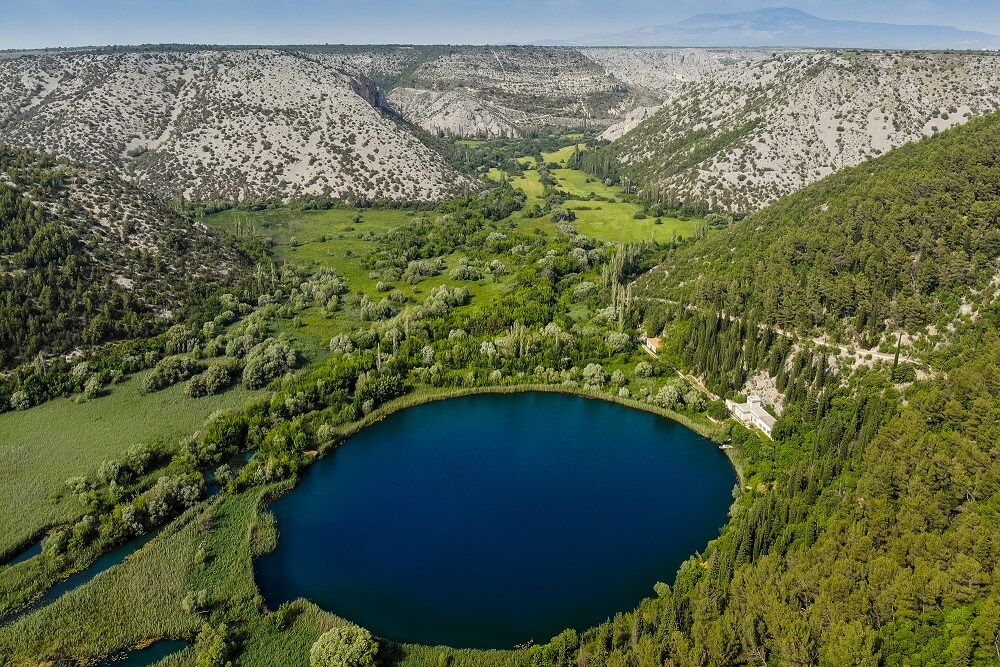
Čikola and Torak canyon (Credtis: National Park Krka)
‘‘Boat trips on the Krka River have always attracted many visitors. Precisely because they are a special attraction for all nature lovers, we made it possible to see the middle and upper reaches of the river by sailing upstream’’, said the Director of the Public Institution Krka National Park, Nella Slavica, and she added: ‘‘Last year we re-established the historical route from Roški slap downstream, and from today visitors can take a boat ride through the Čikola canyon to Lake Torak and thus get to know the fascinating beauty created by two strong rivers, the Krka and the Čikola, through a peaceful game for thousands of years’’.
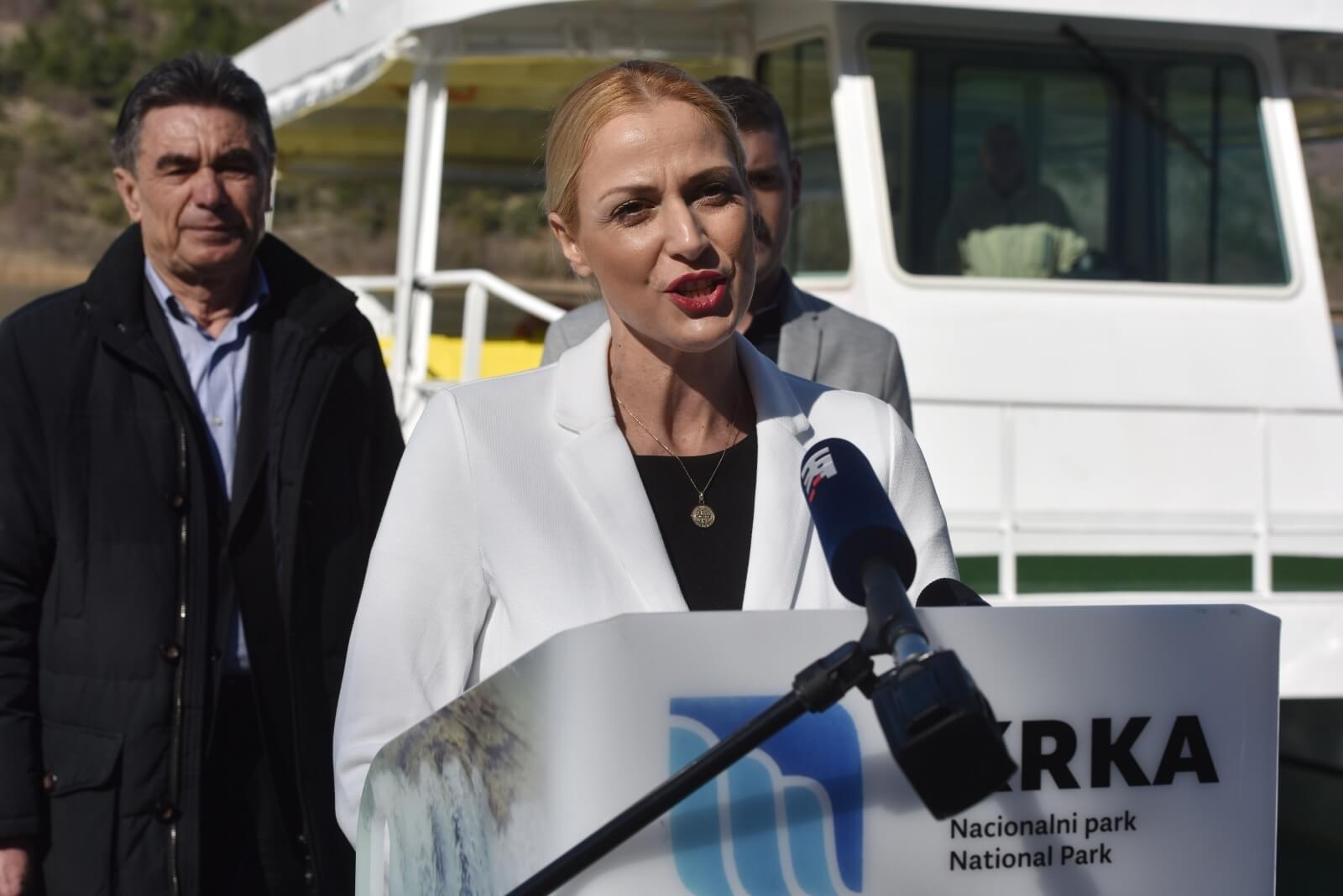
Director of the Public Institution Krka National Park, Nella Slavica (Credits: Pixsell)
In the center of the confluence of the two rivers lies Torak, a lake-shaped spring. Although it is a spring, due to its round shape it looks more like a lake, so we call it a lake spring. Its diameter is 150 m, depth 30 m, and the source is located at the bottom of the lake. Torak is also the name chosen by the friends of the Krka National Park in a poll on social networks, a new ship in the Krka National Park fleet, which sailed on this favorite excursion route this spring, according to the Krka National Park.
The trip can be booked and a ticket can be bought at the boat reception at Skradinski Buk.
For more on what to do and how to get to Krka, check out our dedicated Total Croatia page HERE. Also, visit our 2021 guide on all Croatian National and Natural Parks HERE. Both now in your language!
Follow the latest on flights to Croatia HERE and the latest travel updates and COVID-19 news from Croatia HERE.
For more on travel in Croatia, follow TCN's dedicated page.
Krka National Park Ticket Discount: Walk for a 20% Cheaper Visit in May
April 30, 2021 - Throughout the month of May, a Krka National Park ticket discount is going to be offered in the Park's "Go and Walk" action, which provides a 20% cheaper ticket to any visitor ready to enter and exit the premises on foot.
Krka National Park, as stated on their website, is going to be inviting visitors to enter the Park on foot and get a 20 percent discount on their individual ticket price for doing so. This offer is part of the ''Go and Walk'' action, which starts on Saturday, May the 1st, and is set to continue throughout the whole month.
''The ''Go and Walk'' promotional action implies that people must enter and exit the park on foot in order to get the Krka National Park ticket discount of 20%. All of the park's other services, as well as tickets for visitors who will enter the park by boat or a bus, will be charged by as normal,'' according to Krka National Park's official website.
The discount varies pending on where you intend to go. If you decide to go to the main spectacle of the park, The Skradinski Buk waterfall by taking the hitchhiker trail, either from Lozovac or Skradinski Bridge, the promotional price is 80 kuna. Apart from Skradinski Buk, all other land localities in the park are set to be included in that price. Kids aged 7-18 accompanied by parents or guardians will have to pay only 64 kuna for their ticket, while for kids up to the age of 7, entrance to the park is free of charge.
If you decide to walk only until Roski Slap, an adult ticket will cost 40 kunas and for kids (7-18-year-olds), only 32 kuna.
The third option is also the Krka Monastary and Burnum archaeological site. An adult ticket price for that path is 32 kuna, while the children's ticket costs a mere 24 kuna.
''With the ''Go and Walk'' action, the Public Institute of Krka National Park wants to encourage the active visiting of the park, and the usage of educational-hitchhiking trails too, by reducing the usage of public transport by bus and boats and having a direct impact on lowering CO2 emissions,'' said Nella Slavica of the Public Institute of Krka National Park.
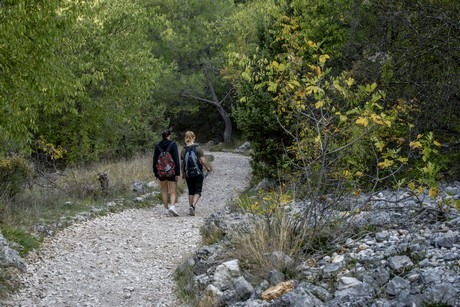
© Krka National Park
Krka National Park is also a holder of the ''Stay Safe in Croatia'' badge, and the park is being very careful in ensuring epidemical measures are respected by both the visitors and employees while informing the public about the benefits of being out in the open air during these challenging times.
Back in the former Yugoslavia, on January the 24th, 1985, the Parliament of the Socialist Republic of Croatia declared Krka a National Park, and it has enjoyed an enormous amount of popularity ever since. This gorgeous park remains a place of natural and cultural heritage, a place to learn, a place to rest, and a place to enjoy a lovely escape from the stress of modern life.
Learn more about Krka National Park on our TC page.
For more about travel in Croatia, follow TCN's dedicated page.
Visitors Choose Name 'Torak' for New Boat in Krka National Park Fleet
March 4, 2021 – Thanks to the online poll conducted with visitors and social media followers, a new boat in the Krka National Park fleet got the name Torak, after a lake-shaped spring in the center of the Krka and Čikola's fairytale confluence.
Krka National Park recently launched online voting to name a new modern ship that will start sailing in their fleet this spring. Lozovac, Torak, Čikola, and Sveti Ivan Krstitelj were the name options, and visitors could vote for the best. Today, Krka National Park published the survey results, and the new modern boat is named – Torak.
Located in the center of the fairytale confluence of the Čikola and Krka rivers, the Torak spring, due to its round shape, looks more like a lake, so it is called a lake spring. Krka National Park's friends, visitors, and followers also liked the name Torak and decided to give it to a new modern boat for sailing from Skradinski Buk to Roški Slap waterfalls.

Torak lake spring / Krka National Park
The Torak lake spring diameter is 150 meters, the depth is 30 meters, and the spring itself is located at the bottom of the lake. This karst spring amazes with its beauty because of its unusual position and the characteristic flora of the lawns and bushes surrounding it.
The name of the new boat in the Krka National Park fleet was confirmed by the Inland Navigation Directorate of the Ministry of the Sea, Transport, and Infrastructure.
A boat ride from Skradinski Buk to Roški Slap has been a special attraction since the very beginning of Krka's excursions. That is why Krka National Park strengthened its fleet with a new ship for 98 passengers and two crew members. This modern vessel has one open and one closed deck, with comfortable seats and an air conditioning system. It is equipped with a ramp and places for people with disabilities.
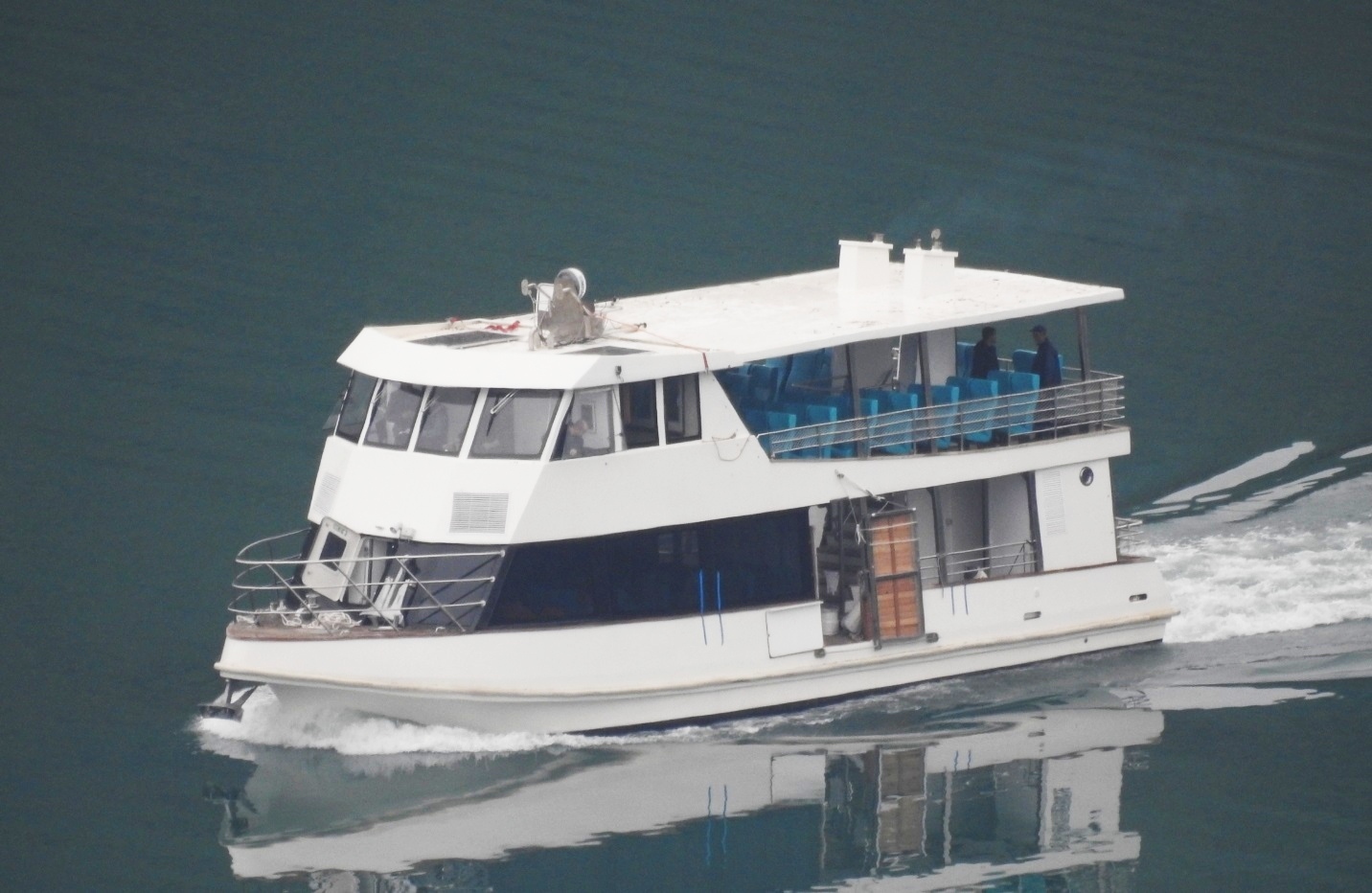
New modern boat Torak / Krka National Park
"Visitors especially enjoy the boat ride, so we must provide them with a complete experience of sailing on the river in our safe and modern boats," said the Krka National Park director Nella Slavica.
For the latest travel info, bookmark our main travel info article, which is updated daily.
Read the Croatian Travel Update in your language - now available in 24 languages.
International Tourist Guide Day in Croatia: Tours of Skradinski Buk, Varaždin, Garešnica
February 17, 2021 – Although the tourism sector has been hit hard by the coronavirus crisis, the International Tourist Guide Day in Croatia will be marked with occasional tours of Skradinski Buk in Krka National Park, Varaždin city, and Garešnica in northern Moslavina.
Since 1990, the International Tourist Guide Day is celebrated on February 21, when the World Federation of Tourist Guide Associations declared it. This year, their theme is "Tourist guides – contributors to rural tourism through creative storytelling." Some Croatian destinations decided to mark it offering walking and storytelling tours.
Krka National Park
In business and life in general, one should always be accommodating and kind. Such are the guides in Krka National Park. These enthusiastic and creative guides seek to teach visitors about the area's natural and cultural values through direct experience.
Krka National Park invites all nature lovers to join them in a guided tour of Skradinski Buk on Saturday, February 20, 2021. While enjoying the winter atmosphere, visitors will get acquainted with the exceptional flora and fauna, rich cultural and historical heritage, and traditional crafts in the ethno-village.
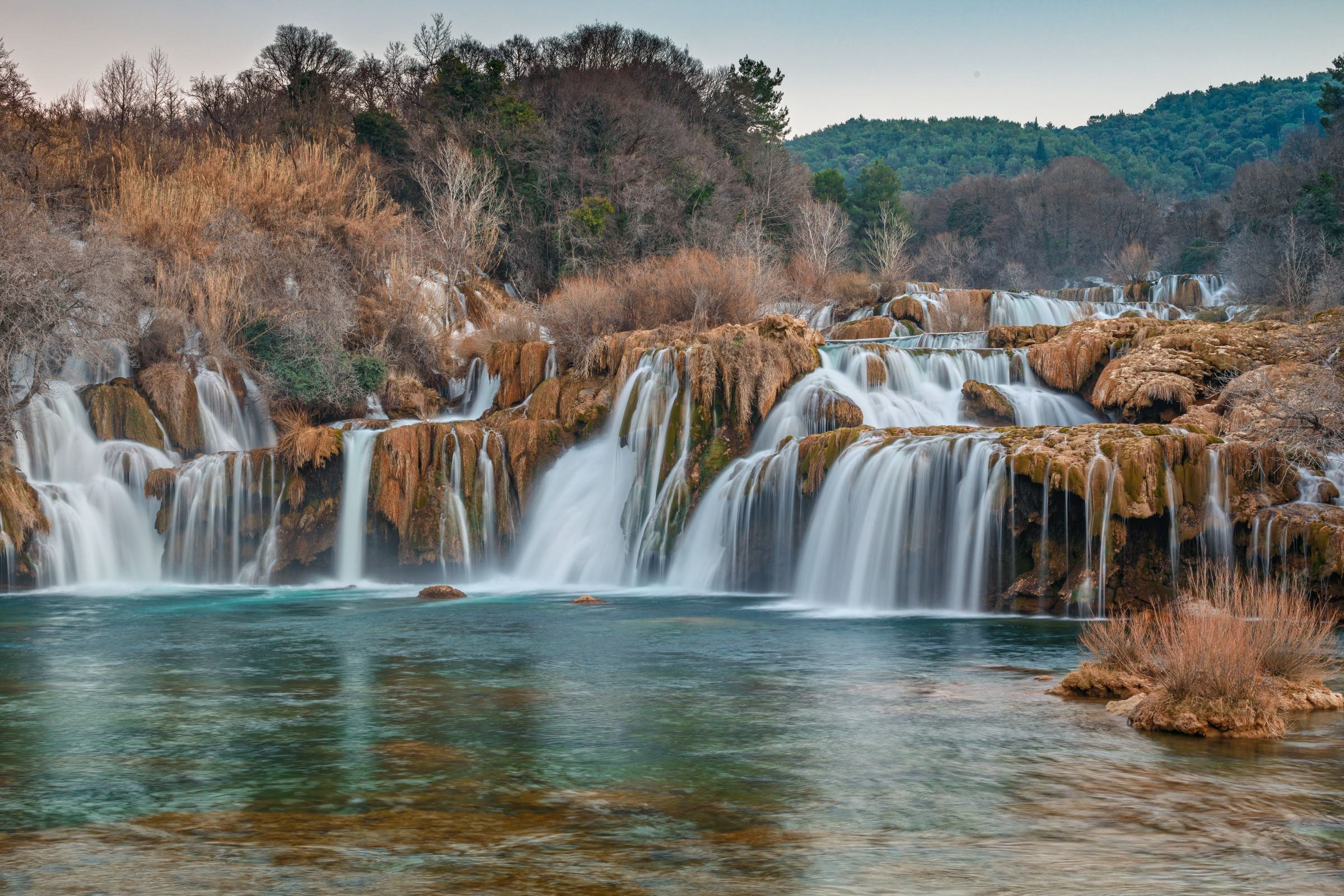
Skradinski Buk in Krka National Park / Copyright Romulić and Stojčić
The number of participants per group is limited, and you can book your visit via the following link. In the winter months, ticket prices for Krka National Park are 30 kunas for adults and 20 kunas for 7 to 18 years old children. The Park is open from 9 a.m. to 4 p.m.
For Krka's guides, interpretation is not just a "job," but a way of exchanging values, emotions, and inspirations. It is successful when the visitor saw, experienced, and began to appreciate something in the protected area unknown to them before.
Varaždin
For the eleventh year in a row, the International Tourist Guide Day will be marked in Varaždin. On Sunday, Varaždin tourist guides will take citizens and their guests free of charge through the historic city center and introduce them to interesting facts from the history and present of Varaždin.
The starting point for tours of the historic city center will be in front of the City Hall, and the tours will start at 10.30 a.m. and 11.30 a.m., following epidemiological measures.
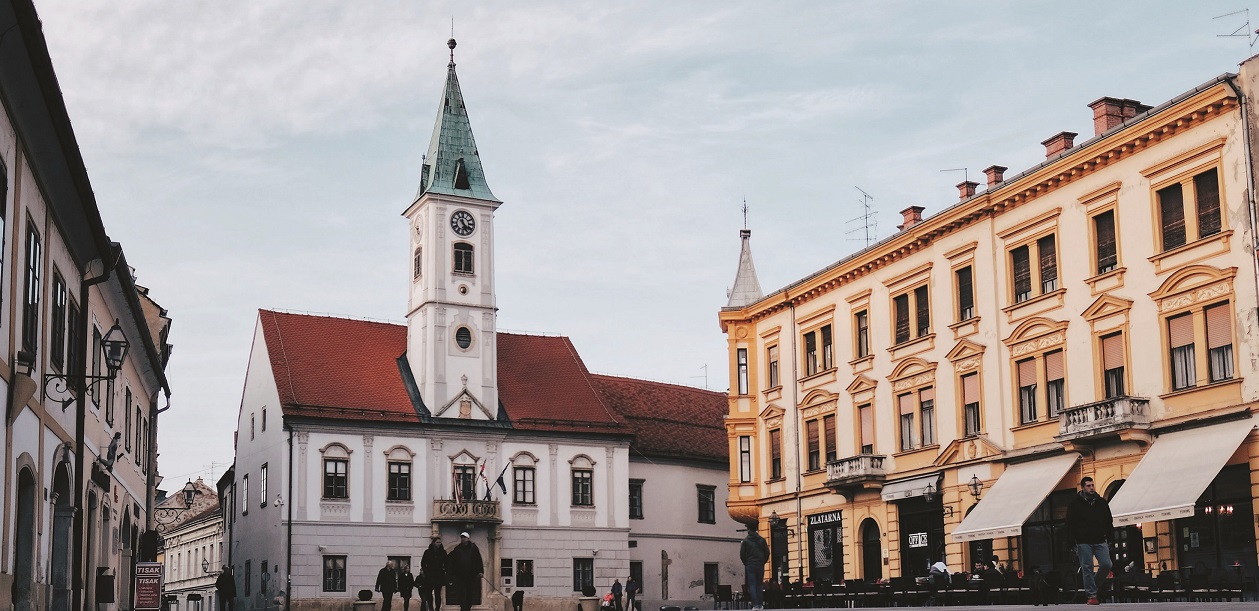
The city of Varaždin / Photo: Varaždin Tourist Board
Besides numerous facts, stories, and legends, visitors will learn some interesting things related to health – the tradition of hospitals in Varaždin, doctors in the past, where the first pharmacy was, and where public bathing areas were.
Garešnica trails of north Moslavina region
In Garešnica, the hometown of two world-famous personalities, "Mr. Morgen" Ivo Robić and Apollo engineer Mike Vucelić, the International Tourist Guide Day will be marked with free walking tours of northern Moslavina. A natural border, the Ilova River, separates Moslavina from neighboring Slavonia.
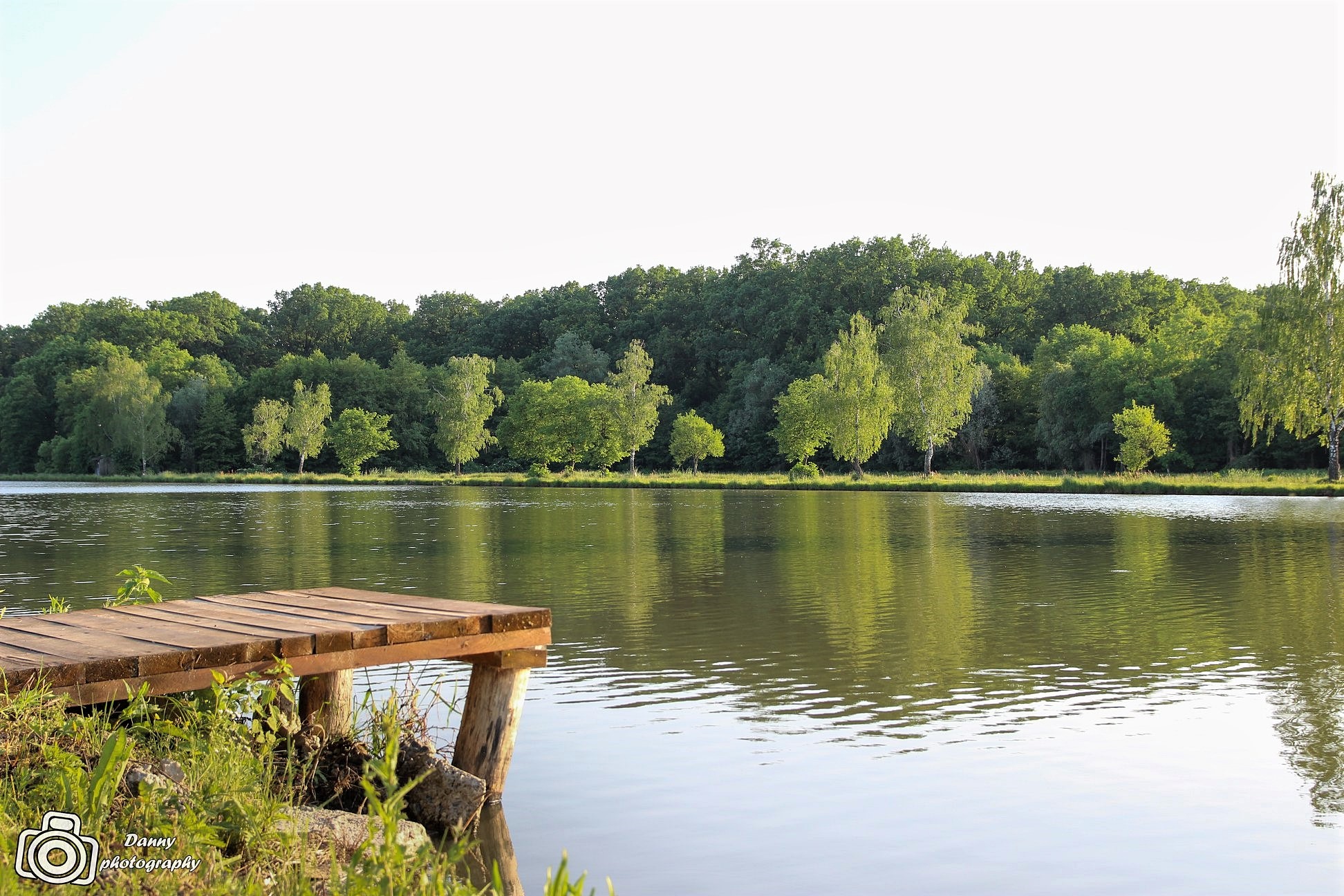
Photo: Northern Moslavina Tourist Board
During the six-kilometer walk, visitors will get to know the peculiarities of Garešnica and northern Moslavina: the old railway (where it led, how it connected Garešnica, when it ceased to serve its purpose), Equestrian Club Garić, Selište, Lake Skresovi (fishing tradition of Moslavina).
On Saturday, February 20, the tour will begin at 5 p.m, and on Sunday, February 21, at 9:30 p.m. on the Garešnica town square.
For the latest travel info, bookmark our main travel info article, which is updated daily.
Read the Croatian Travel Update in your language - now available in 24 languages.
Krka National Park Swimming Ban to Come into Force Next Year
January 18, 2020 - Swimming at the famous Skradinski Buk will be no more as of next year.
HRTurizam writes that conserving and protecting natural resources and biodiversity are the main determinants of the new Regulation on protecting and preserving Krka National Park.
At a time when the world is facing the challenges of climate change, sustainability is becoming imperative for future development, especially in tourism, without talking about natural resources such as Krka National Park.
The overall viability of the Krka River basin and its wildlife rests on the development of travertine barriers, so preserving the travertine deposition process is a fundamental goal of Krka National Park.
To implement active conservation and revitalization measures and align cooperation and activities with the local community, the new regulations deliver innovations in line with long-term strategic goals and new sustainable management measures that underpin the future management plan and the pending spatial plan.
For this reason, there will be a swimming ban at Krka National Park from January 1, 2021.
However, since humans have coexisted with the river thus far, swimming will be allowed at the following locations: Stinice, Remetić - Pisak and the downstream of the Roški Slap.
Therefore, swimming at Skradinski buk, which was most attractive to visitors, will no longer be allowed.
“The public institution 'Krka National Park', before its 35th birthday, will adopt the most important strategic documents that will determine the path we want to take towards our mature years. What kind of ecosystem we will leave for future generations is our most important task and new regulations have been adopted following it. After many years of deliberation and research, considering the needs of both nature and us, who in one way or another use what Krka has given us, measures have been adopted that will contribute to long-term sustainable management and protecting nature,” said the director of Krka National Park, Nella Slavica, who added:
“The regulations are strongly focused on conserving resources and the richness of biodiversity, whether it concerns regulating visitor numbers, waste disposal, hunting and fishing or deforestation. The manner of using water and public water resources in sub-zones is clearly defined and obliges the users to submit annual work plans following the activities of the Institution.“
The regulations apply to employees of Krka National Park, residents of the National Park, property owners and right holders of real estate in the Park and their family members, natural and legal persons who carry out permitted activities, visitors and other users of the Park space in the area of Krka National Park.
Compared to the old 2011 regulations, the new one also provides a detailed explanation of the Krka National Park zoning, which includes management zones of strict and directional protection, as well as zones of use and subzones of settlements, visitor infrastructure, using natural resources and roads that are under the Management Plan, a 10-year strategy document and a zoning map attached.
"In the strict protection zone, the goal of management is to preserve natural processes and habitats and their components," emphasized the expert director of Krka National Park, Drago Marguš, who explained that “the directional protection zone encompasses non-native ecosystems: grasslands, pastures, aquatic habitats, etc., which for the purpose of long-term conservation require active management measures of maintenance or restoration."
“Active conservation and revitalization measures are allowed in the directional protection zones without which the essential characteristics of the area would be changed. Agricultural activities are allowed by the management objectives for the conservation of biological, geological and landscape values,” emphasized Marguš.
For example, this means that the mowing and traditional grazing of livestock breeds under human control is permitted, except on steep canyon slopes, Skradinski buk and Roški Slap, and visitor infrastructure subzones.
Hunting and fishing, on the other hand, are not permitted activities at the National Park. Because of its geological history, the Krka River is home to endemic fish species, and its banks preserve the habitats of numerous endangered animals. Therefore, it is considered a natural monument of the highest category and should be preserved for the future.
The new regulations, adopted by the Ministry of the Environment and Energy of the Republic of Croatia, were decided on December 21, 2019, which you can read here.
To read more about lifestyle in Croatia, follow TCN’s dedicated page.
Go to Visovac Island for Free Between 09:30 and 10:45 on Sundays!
As Poslovni Dnevnik writes on the 23rd of May, 2019, enjoying nature and the peace of the beautiful little island of Visovac is the main motive of the visitors who come here to get away from the hustle and bustle of daily life and to be filled with new energy. The peaceful draw of this island on Visovac Lake, between the Roški slap and the Skradinski buk, is something special indeed.
When it comes to the question of just why this unassuming little pearl of the Krka National Park has always been a place for prayer and reflection, or simply a place to take in the vibrant nature, it's best to seek the answer yourself.
Visovac was first settled by the hermits, more specifically deserters of the Order of St. Augustine, who built a smaller monastery and a small church dedicated to St. The apostle Paul on the island, the Franciscans then arrived on the island after their departure.
Since the mid-fifteenth century, the Franciscan monastery and the Church of Our Lady of Visovac have been located there, which together with the natural landscape itself, make for a truly unique little island. The monastery boasts a valuable archaeological collection, as well as a varied collection of historical objects and a valuable library.
The enchanting nature of Visovac Lake and Krka National Park was quickly recognised and valued by producers, and back in the 1960s, this little island was the ideal place, what with its untouched beauty, to play the location at which the Native Americans once lived, depicted in the adventures of Winnetou. Four years ago, there was yet another new trilogy shot at Visovac.
Boats are sailing to Visovac from Stinica and Remetić.
"On Sunday, visitors to the island will enjoy free transport the boats from Stinica and Remetić, but only when the departures for masses leave (09:30/45, 10:00/15, and 10:30/45, and the boats return immediately after the end of the masses). As for the rest of the days, the boats sail to Visovac at their normal price and with the regular cruise line for Krka NP,'' writes Visovac.hr
The National Park organises excursions by boat from Skradinski buk for which its wise to set aside around two hours. A somewhat longer tour lasts for four hours, and it includes the beauty of Skradinski buk and Roški slap, as well as including Visovac. The prices are from 35 to 130 kuna per person, and children get free tickets up until four years of age, reports PunKufer.
Make sure to follow our dedicated lifestyle page for much more.
Krka Beyond the Waterfalls: How to Reach Famous Attractions in Krka National Park
March 19, 2018 - Continuing our series on Krka National Park beyond the waterfalls, we bring you a short guide to the five entrances leading to Krka's major attractions
Krka Beyond the Waterfalls: Explore the National Park by Boat
Continuing our look at National Park Krka beyond the waterfalls, an overview of available boat rides, merging multiple highlights of the park into an unforgettable experience


